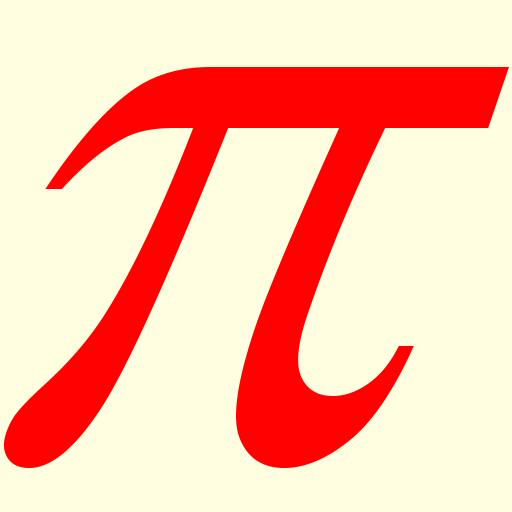What is Pi?
Pi is the sixteenth letter of the Greek alphabet, but the lower case
symbol, π, is used to represent a special mathematical constant.
Here is what Microsoft Bookshelf '95 has on the subject:
pi (π) noun
plural pis
1. The 16th letter of the Greek alphabet.
2. Mathematics. A transcendental number, approximately
3.14159, represented by the symbol π, that expresses the ratio of
the circumference to the diameter of a circle and appears as a
constant in many mathematical expressions.
[Medieval Greek, from Greek pei, of Phoenician origin; akin to
Hebrew pé.] ¹
¹ The American Heritage ® Dictionary of the English
Language, Third Edition copyright © 1992 by Houghton Mifflin
Company. Electronic version licensed from InfoSoft International,
Inc. All rights reserved.
Here is what Microsoft Encarta '95 has on the subject:
Pi, Greek letter π used in mathematics as the symbol for the ratio
of the circumference of a circle to its diameter. Its value is
approximately 22/7; the approximate value of π to five decimal
places is 3.14159. The formula for the area of a circle, A = π r² (r,. is the radius), uses the constant.
Various approximations of the numerical value of the ratio were used
in biblical times and later. In the Bible, the value was taken to be
3; the Greek mathematician Archimedes correctly asserted that the
value was between 3 10/70 and 3 10/71. With computers, the value has
been figured to more than 100 million decimal places, although this
has no practical value. The ratio is actually an irrational number,
so the decimal places go on infinitely. The symbol π for the ratio
was first used in 1706 by the English mathematician William Jones,
but it became popular only after its adoption by the Swiss
mathematician Leonhard Euler in 1737. In 1882 the German
mathematician Ferdinand Lindemann proved that π is a transcendental
number—that is, it is not the root of any polynomial equation with
rational coefficients (for example, 2/3 x³
− 5/7 x² − 21 x + 17 = 0). Consequently,
Lindemann was able to demonstrate that it is impossible to square the
circle algebraically or by use of the ruler and compass.
Contributed by:
James Singer
Reviewed by:
J. Lennart Berggren
"Pi," Microsoft ® Encarta. Copyright © 1994 Microsoft
Corporation. Copyright © 1994 Funk & Wagnall's Corporation.

Return to Computing Pi
Return to Harry's Home Page
This page accessed  times since October 20, 2004.
times since October 20, 2004.
Page created by: hjsmithh@sbcglobal.net
Changes last made on Sunday, 17-Jul-05 13:18:14 PDT

 times since October 20, 2004.
times since October 20, 2004.
 times since October 20, 2004.
times since October 20, 2004.